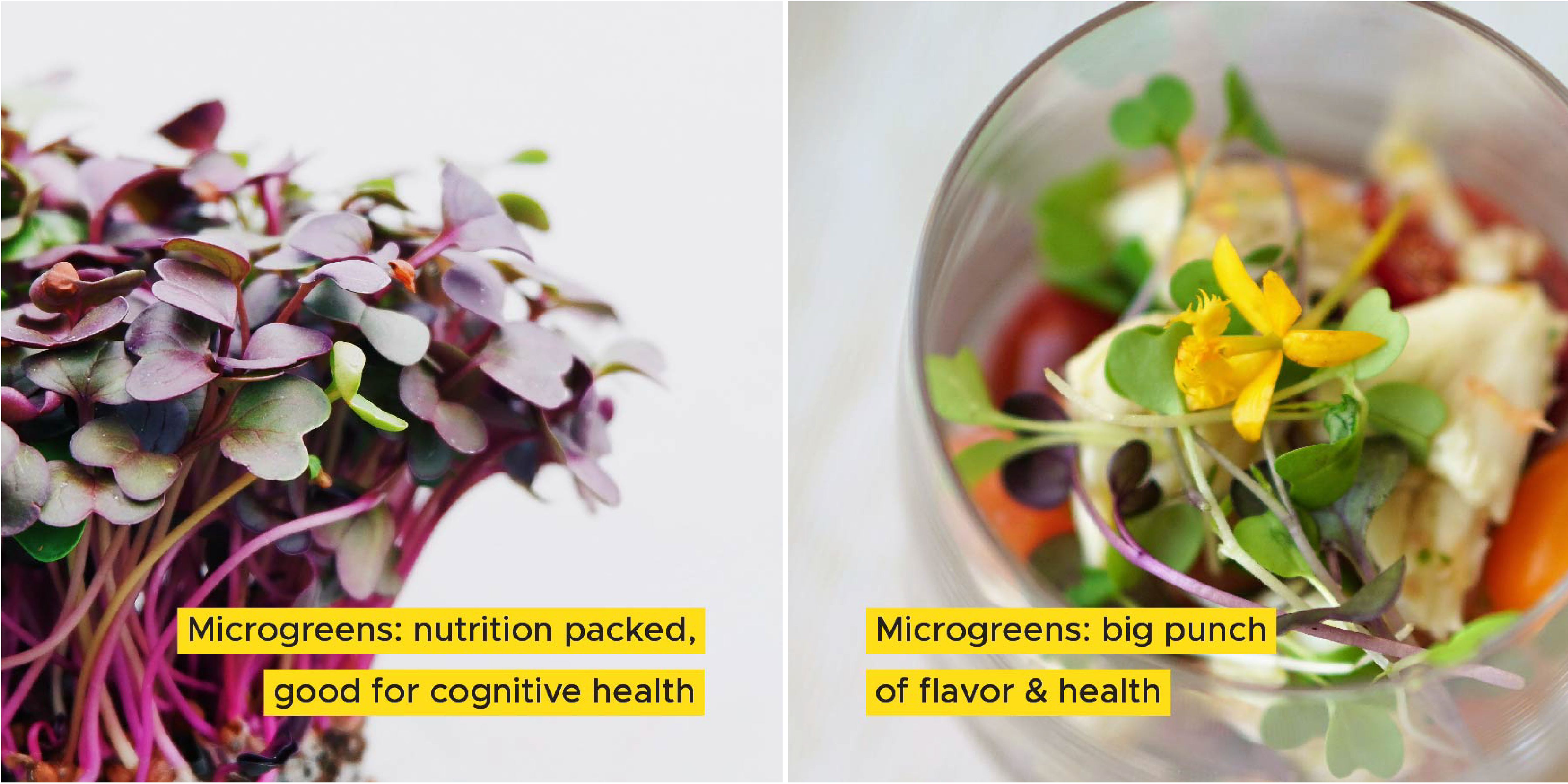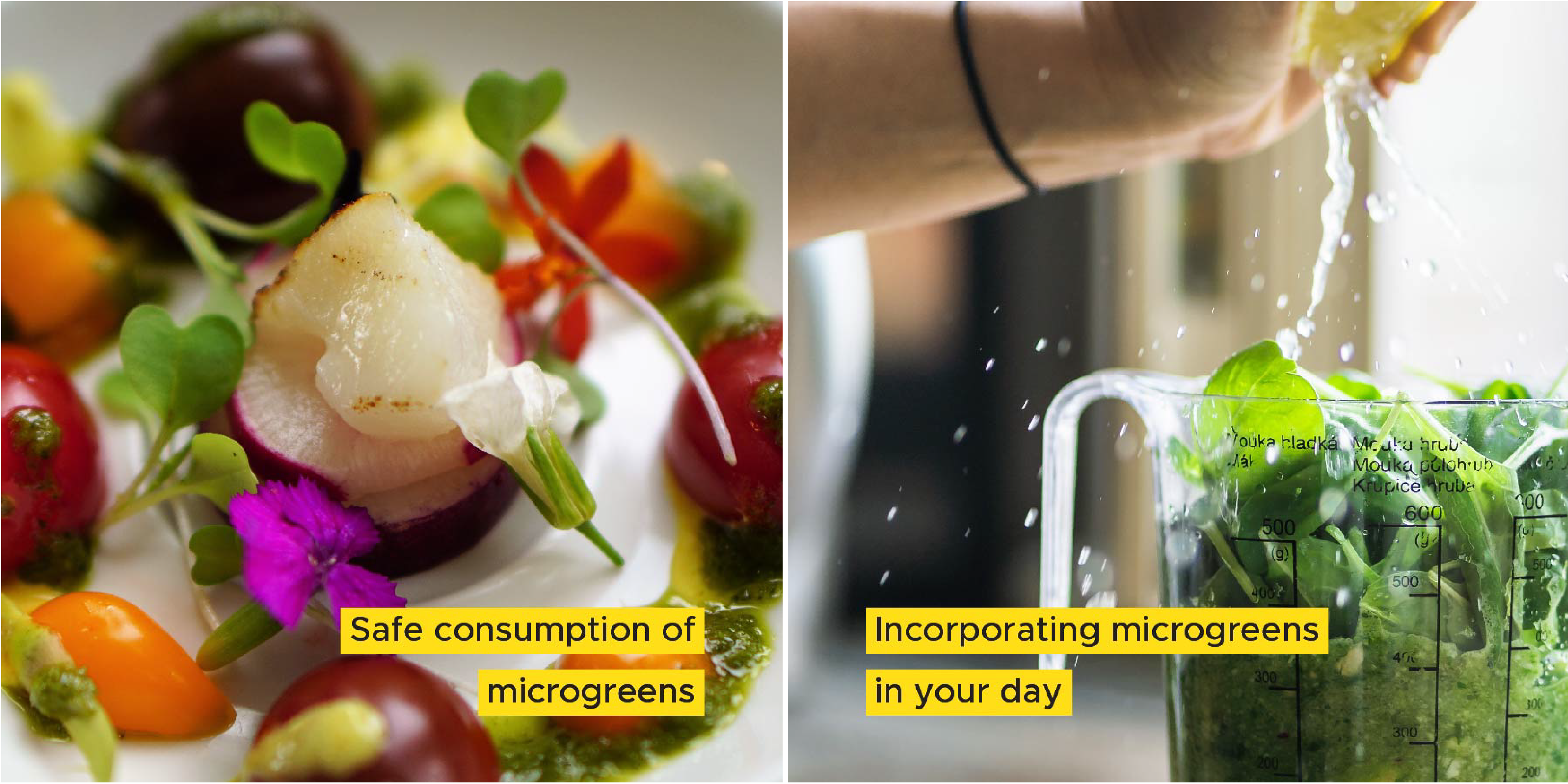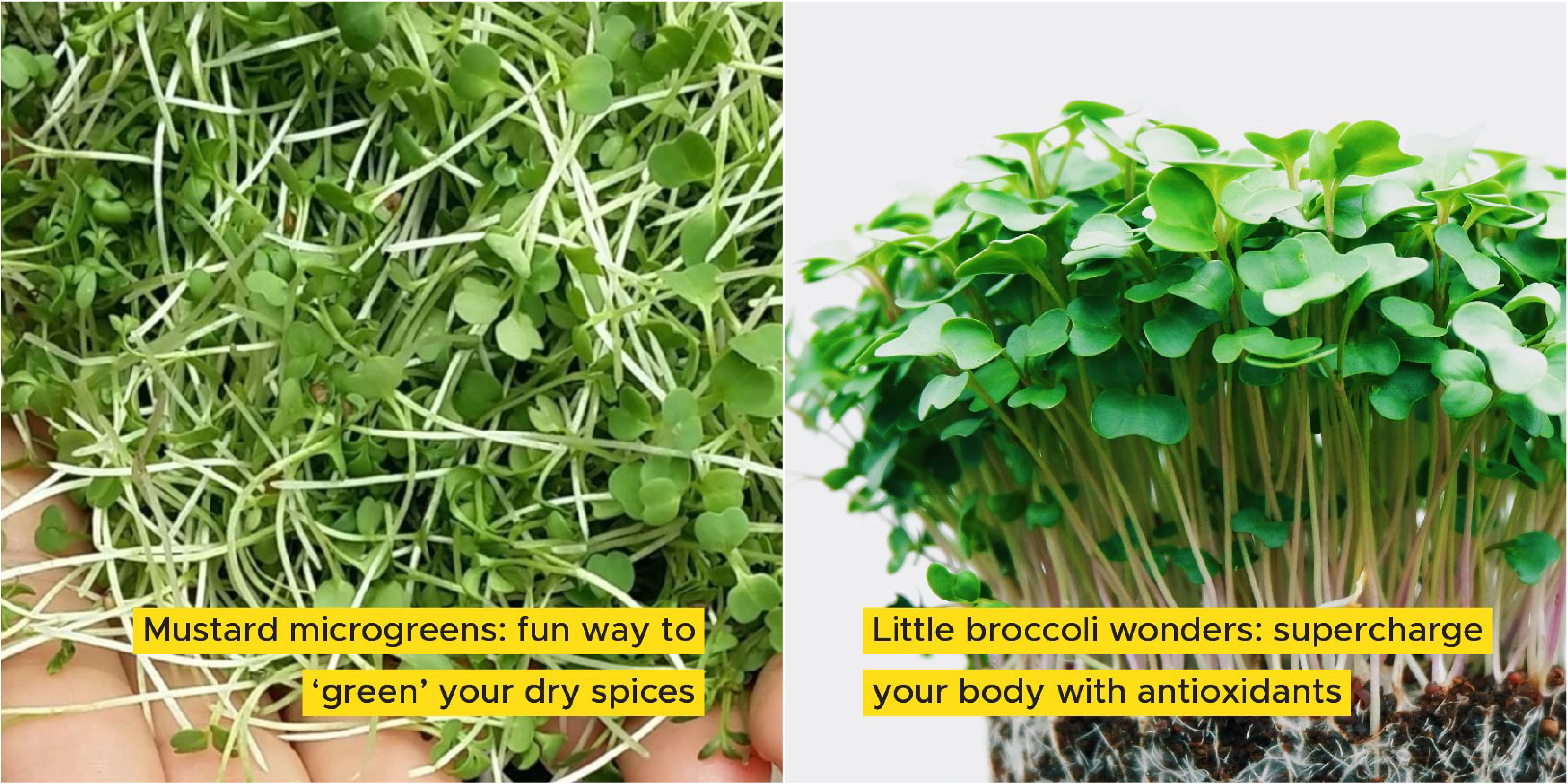The microgreen revolution
Published: 26-Nov-2020 Category: Food Bulletin Newsletter

By Ashok Vasudevan
The microgreen revolution
Microgreens are the seedlings of plants, This is typically early in the life cycle of the plant, some time after the first leaves emerge. They are usually used to add flavour and color to dishes, and have been making waves as a nutrient-dense superfood.
Microgreens can be grown from most types of seeds. Apart from salad greens, leafy vegetables and edible flowers, some legumes (beans, lentils) and grains (rice, barley, buckwheat) are sometimes grown as microgreens.
Today, let’s explore more about these superfoods.

Microgreens: nutrition packed, good for cognitive health
Did you know those little microgreens have up to 40 times the antioxidants and polyphenols of the mature plant? They are truly nutrition dynamos. Antioxidants and polyphenols are powerful anti-inflammatory compounds, and can help lower the risk of cognitive decline and dementia. Microgreens also provide more intense flavor, which is terrific for seniors with reduced taste sensitivity – they get the rich taste and strengthen cognitive health.
Microgreens: big punch of flavor & health
Microgreens can add an intense punch of flavor to your dishes – sweet, sour, pungent, bitter. They actually embody a concentrated dose of the full-sized vegetable’s flavor and nutrition. Microgreens are rich in many vitamins and minerals. Some healthy varieties for you to grow or buy are pea shoots, radish, sunflower, wheatgrass, mustard, etc. Add them to your salads or main dishes or even to a juice or smoothie.

Safe consumption of microgreens
Eating microgreens is generally considered safe. While there is contamination risk from E. coli, this risk arises from a mixture of the type/composition of the microgreen, and time spent in storage. To enjoy, always check the sell-by date and consume within the week from purchase.
Incorporating microgreens in your day
There are many ways to include microgreens in your diet - juices and smoothies are popular examples. Given their vibrant colors and distinct taste profiles, microgreens work especially well as a garnish over food, beverages and desserts! Growing them at home is simple - you just need a sunny windowsill, seeds, a shallow pot and some potting mix.

Mustard microgreens: fun way to ‘green’ your dry spices
Place a pot with soil on a sunny windowsill, outdoors or balcony with ample sun. Moisten soil well, scatter a handful of mustard seeds, gently pressing into soil. Check soil for moistness daily and water lightly as needed. When you see a pot full of tiny leaves, harvest by pulling gently out with the roots. Rinse off soil & add to salads, sandwiches, garnish a stir fry.
Little broccoli wonders: supercharge your body with antioxidants
The broccoli microgreen looks completely different from the adult plant we are used to, and tastes vastly different! Some time between the first 10-14 days, the plant peaks in its production of sulforaphane, sometimes up to 100x the concentration of the mature plant. Sulforaphane is nature’s most potent activator of antioxidants and has been shown to inhibit tumour growth.

